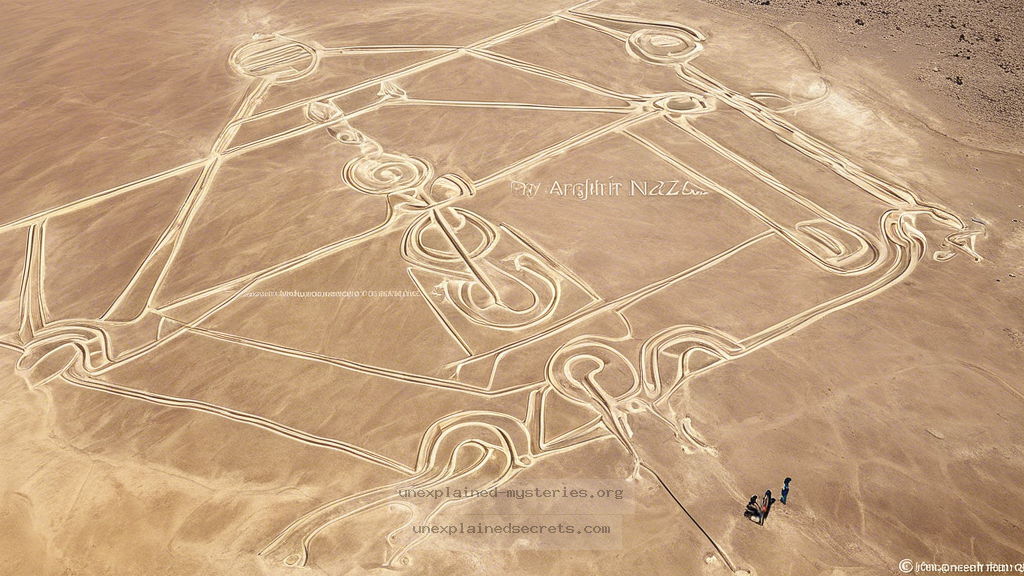What Secrets Lie Behind the Mysterious Nazca Lines of Peru?
What Secrets Lie Behind the Mysterious Nazca Lines of Peru?
The Nazca Lines, a series of enormous geoglyphs etched into the arid plains of southern Peru, have puzzled historians, archaeologists, and tourists alike for decades. These intricate designs range from simple lines to complex figures resembling animals and plants, some stretching over 1,200 feet. But what do they signify, and how were they created? The enigma of the Nazca Lines not only raises questions about the ingenuity of ancient civilizations but also invites speculation about their purpose, origins, and the potential for lost knowledge. This post delves into the mystery of the Nazca Lines, exploring their historical context, the theories surrounding them, and the ongoing debates that keep this ancient mystery alive.
Historical Context: The Nazca Civilization
The Nazca Lines were created by the Nazca civilization, which flourished between 200 BCE and 600 CE in modern-day Peru. This society is renowned for its advances in agriculture, pottery, and textiles, but they also exhibited a profound understanding of geometry and astronomy. The lines themselves are thought to be a form of expression, possibly linked to religious or ritualistic practices. Archaeological evidence suggests that the Nazca people engaged in complex agricultural systems, and their society was likely deeply intertwined with their environment and celestial events.
Understanding the Nazca civilization’s context is critical in interpreting the lines. The region is characterized by extreme aridity, with little rainfall and a harsh climate. The Nazca people developed intricate water management systems, including aqueducts and underground channels, to support their agricultural endeavors. This ingenuity raises questions about the cultural significance of the lines: were they merely artistic expressions, or did they serve a practical purpose in relation to their agricultural practices?
The Core Concepts: What Are the Nazca Lines?
The Nazca Lines are geoglyphs created by removing the top layer of reddish-brown iron oxide-coated stones to reveal the lighter, sandy soil beneath. This technique creates a stark contrast that can last for centuries due to the region’s dry climate. The designs include various figures, such as the famous hummingbird, monkey, spider, and astronaut, as well as geometric shapes like triangles and rectangles.
One of the most fascinating aspects of the Nazca Lines is their scale and complexity. Some figures can only be fully appreciated from the sky, leading to speculation about how the Nazca people conceptualized these designs without aerial views. This has led some researchers to propose that they may have had a sophisticated understanding of geometry and spatial reasoning far beyond what was previously thought possible for ancient civilizations.
Theories on Purpose: Rituals, Astronomy, or Communication?
What exactly were the Nazca Lines intended for? Various theories have been proposed over the years, each suggesting different purposes:
- Religious Rituals: Some scholars believe that the lines served as pathways for rituals or offerings to deities, particularly related to water, which was a precious resource in the arid landscape.
- Astronomical Alignments: Another prominent theory posits that the lines were aligned with celestial bodies and astronomical events, functioning as an ancient calendar or observatory for agricultural cycles.
- Wayfinding: Some researchers suggest that the lines might have served as markers for travelers or as a form of communication between different groups within the Nazca culture.
While no single theory has gained universal acceptance, they all highlight the intricate relationship between the Nazca civilization and their environment, as well as their sophisticated understanding of natural phenomena.
Evidence Supporting the Theories
Research has provided various forms of evidence that lend credence to these theories. For instance, studies of the lines’ orientation and placement have revealed alignments with the sun, moon, and stars. The famous figure of the “Hummingbird,” for example, aligns with the position of the sun during the summer solstice, suggesting a potential astronomical significance.
Furthermore, ethnographic studies of modern-day indigenous cultures in the region have shown that such geoglyphs often hold spiritual and cultural significance. This context may provide insight into the Nazca’s belief systems, suggesting that the lines were not merely artistic but deeply intertwined with their spiritual life.
Common Misconceptions and Clarifications
Despite extensive research, several misconceptions about the Nazca Lines persist. One of the most common is the belief that they were created by aliens or ancient astronauts. While this idea captures the imagination, it undermines the capabilities and achievements of the Nazca civilization.
Another misconception is that the lines are at risk of disappearing. While environmental factors do play a role, the remoteness of the region and protective measures have helped preserve many of the geoglyphs. However, increased tourism and industrial activity in the area have raised concerns about potential damage.
Ongoing Research and Future Developments
Research surrounding the Nazca Lines continues to evolve, with new technologies providing fresh insights. For example, aerial photography and satellite imaging have enabled researchers to discover additional lines and figures that were previously obscured. These modern techniques allow for comprehensive mapping, making it easier to study the lines’ relationships to their surrounding environment.
Moreover, interdisciplinary approaches that combine archaeology, anthropology, and astronomy are gaining traction. Researchers are increasingly focusing on the cultural and social aspects of the Nazca civilization, seeking to understand how these lines fit into the broader context of their society.
Best Practices for Investigation and Study
For those interested in studying the Nazca Lines, several best practices can enhance understanding and research outcomes:
- Engage with Local Knowledge: Collaborating with local experts and indigenous communities can provide invaluable insights into the cultural significance of the lines.
- Utilize Technology: Employing modern technology, such as drones and GIS mapping, can uncover new data and facilitate more detailed analyses.
- Promote Conservation: Advocating for the protection of the lines from environmental damage and tourism-related wear is crucial for their preservation.
Implications for Understanding Ancient Civilizations
The Nazca Lines challenge our assumptions about ancient civilizations, suggesting that they possessed knowledge and skills that were sophisticated for their time. This understanding can reshape our perceptions of technological and cultural development in pre-Columbian societies.
Furthermore, the lines encourage us to consider how environmental factors influenced the beliefs and practices of ancient peoples. By studying the Nazca Lines, we can learn more about the importance of water management, agricultural practices, and the relationship between communities and their landscapes.
Conclusion: The Ongoing Mystery
The Nazca Lines remain one of the most captivating ancient mysteries, intertwining history, culture, and the natural world. As we continue to explore the significance of these geoglyphs, we gain deeper insights into the Nazca civilization, its beliefs, and its remarkable achievements. While many questions remain unanswered, ongoing research will hopefully illuminate the purpose and meaning behind these enigmatic lines, allowing us to better appreciate the ingenuity of human expression across time and space.
As we look to the future, the Nazca Lines serve as a powerful reminder of the enduring mysteries of our past and the unending quest for knowledge that defines humanity. Whether as a spiritual expression, astronomical tool, or cultural marker, the lines invite us to ponder not only their origins but also the profound ways in which ancient peoples interpreted and interacted with their world.
Other Articles
Recent Posts
- What Happened to Flight MH370? The Conspiracy Theories That Still Haunt Us
- What Secrets Lurk Within the Walls of the Infamous Trans-Allegheny Lunatic Asylum?
- What Evidence Supports the Existence of Bigfoot in the Pacific Northwest?
- What Happened to the Indus Valley Civilization? Unraveling the Mysteries of Ancient Urban Life
- Can Telepathy Be Scientifically Proven Through Laboratory Evidence?







